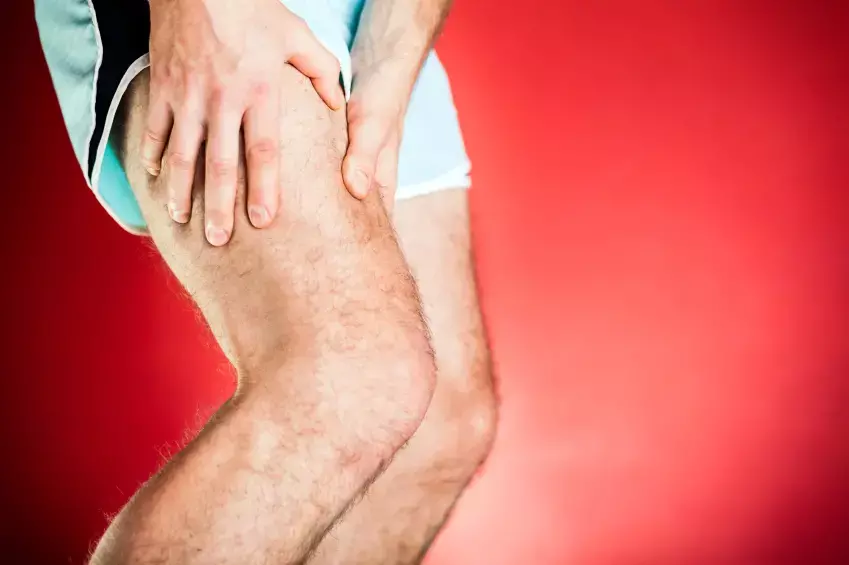- Home
- Medical news & Guidelines
- Anesthesiology
- Cardiology and CTVS
- Critical Care
- Dentistry
- Dermatology
- Diabetes and Endocrinology
- ENT
- Gastroenterology
- Medicine
- Nephrology
- Neurology
- Obstretics-Gynaecology
- Oncology
- Ophthalmology
- Orthopaedics
- Pediatrics-Neonatology
- Psychiatry
- Pulmonology
- Radiology
- Surgery
- Urology
- Laboratory Medicine
- Diet
- Nursing
- Paramedical
- Physiotherapy
- Health news
- Fact Check
- Bone Health Fact Check
- Brain Health Fact Check
- Cancer Related Fact Check
- Child Care Fact Check
- Dental and oral health fact check
- Diabetes and metabolic health fact check
- Diet and Nutrition Fact Check
- Eye and ENT Care Fact Check
- Fitness fact check
- Gut health fact check
- Heart health fact check
- Kidney health fact check
- Medical education fact check
- Men's health fact check
- Respiratory fact check
- Skin and hair care fact check
- Vaccine and Immunization fact check
- Women's health fact check
- AYUSH
- State News
- Andaman and Nicobar Islands
- Andhra Pradesh
- Arunachal Pradesh
- Assam
- Bihar
- Chandigarh
- Chattisgarh
- Dadra and Nagar Haveli
- Daman and Diu
- Delhi
- Goa
- Gujarat
- Haryana
- Himachal Pradesh
- Jammu & Kashmir
- Jharkhand
- Karnataka
- Kerala
- Ladakh
- Lakshadweep
- Madhya Pradesh
- Maharashtra
- Manipur
- Meghalaya
- Mizoram
- Nagaland
- Odisha
- Puducherry
- Punjab
- Rajasthan
- Sikkim
- Tamil Nadu
- Telangana
- Tripura
- Uttar Pradesh
- Uttrakhand
- West Bengal
- Medical Education
- Industry
Submuscular locked plate with cluster technique best for treatment of Pediatric Femoral Shaft Fractures

Asyut, Egypt:The study by Wael El Adly et al supports the use of submuscular locked plate with cluster technique in the treatment of studied fractures over flexible Intramedullary Nail (IMN).
The study was conducted to compare the outcomes between the flexible intramedullary nail and submuscular Locked Plate with the cluster technique in fixation of pediatric femoral shaft fractures at the age group between 6 and 12 years old with simple diaphyseal closed or Gustilo open grade I fractures.
Fifty children aged 6–12 years with femoral fractures were enrolled in this study. Those beyond the age limit specified above, Gustilo grades II and III fractures, neglected or old fractures > 3 weeks, pathological fractures, and metaphyseal fractures were excluded. The children were randomly assigned equally to the two groups for fractures fixation.
In the first group, the child with femoral shaft fracture was fixed with flexible IMN. In the second group, submuscular locked plating with the cluster technique method was used to fix the fractured femoral shaft as described by Khaled et al. The follow-up period was 1 year.
Operative time, radiation time, the time lag from trauma to surgery, the length of hospital stay, and intraoperative complications were recorded.
No weight-bearing is allowed until fracture callus is seen about (4–6 weeks) then partial weight-bearing was allowed. Full weight-bearing was begun when a bridging callus is present on at least three of the four cortices.
The postoperative follow-up in the out-patient clinics was done after 2 weeks, 6 weeks, 3 months, and then every 3 months up to 1 year. Timing of weight-bearing, post-operative complications, radiological findings and bone union, rehabilitation, and knee ROM, were recorded. The final functional outcomes were evaluated using the Flynn scoring system.
The results of the study were:
• No significant differences were detected between both groups regarding the age, gender, affected side, mechanisms of fracture, or fracture classifications.
• The operative time and radiation time were longer in the plating group, while the amount of blood loss was lesser in the nail group.
• The patients treated with plating had better results concerning knee range of motion, weight-bearing, malalignment, and length discrepancy, with fewer complications and better functional outcomes.
The authors concluded that - Flexible IMN provides shorter operative time, radiation time, and lesser blood loss. On the other hand, patients treated with plating had better results concerning knee ROM, weight-bearing, malalignment, and length discrepancy, with fewer complications and better functional outcomes. The periods of hospital stay, and fracture union time are equivalent in both methods. These results support the use of submuscular locked plate with cluster technique in the treatment of these types of fractures over flexible IMN.
Further reading:
Flexible Intramedullary Nail Versus Submuscular Locked Plate with the Cluster Technique in Pediatric Femoral Shaft Fractures Fixation
Wael El Adly, Kamal El Gafary, Mohamed Khashaba, Hossam Abubeih.
Indian Journal of Orthopaedics (2022) 56:580–586
https://doi.org/10.1007/s43465-021-00571-7
MBBS, Dip. Ortho, DNB ortho, MNAMS
Dr Supreeth D R (MBBS, Dip. Ortho, DNB ortho, MNAMS) is a practicing orthopedician with interest in medical research and publishing articles. He completed MBBS from mysore medical college, dip ortho from Trivandrum medical college and sec. DNB from Manipal Hospital, Bengaluru. He has expirence of 7years in the field of orthopedics. He has presented scientific papers & posters in various state, national and international conferences. His interest in writing articles lead the way to join medical dialogues. He can be contacted at editorial@medicaldialogues.in.


